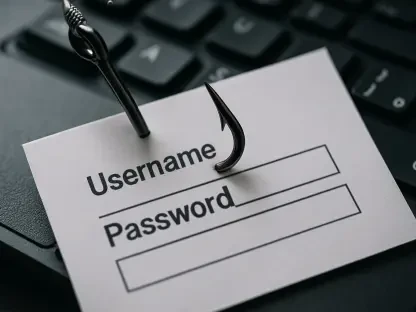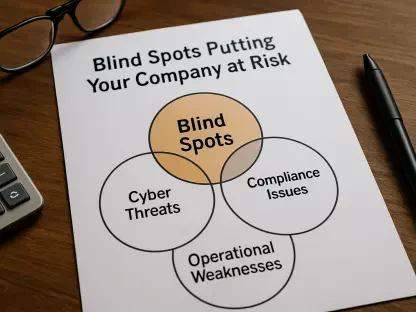Listen to the Article
The past few years have reshaped enterprise security in ways few anticipated. Sophisticated threats now emerge faster than they can be logged. Cloud sprawl, third-party dependencies, and hybrid work have all expanded the attack surface. And the promise of AI-powered defense, while real, has yet to fully deliver the resilience many hoped for.
Security leaders are under pressure from regulators, boards, and customers. But here’s the uncomfortable truth: it’s not always the tech stack that fails. Sometimes, it’s the mindset behind it.
In this article, you’ll unpack one of the most overlooked risks in modern cybersecurity: overconfidence. The belief that your controls are airtight, your people won’t slip up, and that your playbooks will hold when the pressure hits.
Because often, it’s not the threat itself that does the most damage—it’s the assumption that you’re already prepared for it.
A Quiet Pattern Behind Major Breaches
Forensic reports rarely use the word “overconfidence.” But read between the lines, and it’s everywhere. In 2023 alone, several high-profile breaches were traced back to basic misconfigurations, expired certificates, or missed alerts that were hiding in plain sight.
Think of MGM Resorts’ September 2023 ransomware attack. The group responsible, ALPHV, didn’t use a futuristic exploit. They tricked a help desk agent over the phone—cleanly executed social engineering. But the real breach was the misplaced trust that such an approach would not work on them.
Or take the persistent rise of credential stuffing attacks, despite near-universal awareness of multifactor authentication. Many organizations assume that logging and authentication tools are working as intended. But when enforcement gaps exist—especially across legacy systems or third-party integrations—those assumptions quietly accumulate into exposure.
Security debt may sound technical, but in practice, it’s often psychological: a backlog of decisions made on misplaced confidence.
Where Overconfidence Creeps in
In many cases, overconfidence is cultural. This isn’t just about arrogance. It’s baked into how security teams are measured, how tooling is sold, and how business leaders interpret risk.
Breaking it down, it looks like:
Too much faith in tooling. Most mature security firms run dozens—if not hundreds—of tools across the stack: endpoint protection, security information and event management, extended detection and response, data loss prevention policies, firewalls, proxies…, and the list goes on. It’s easy to assume that coverage equals control.
But in reality, tool sprawl typically creates blind spots because alerts get buried, and overlapping controls create false positives. Many tools—especially those integrated hastily during growth phases—go unpatched or improperly configured.
More isn’t always better. And “set it and forget it” is rarely a safe strategy.
Assuming playbooks will work under stress. Incident response plans look great on paper. But when ransomware hits on a Friday night, or a phishing campaign targets your accounts payable team during quarterly close, human behavior shifts. Stress compromises judgment, silos break coordination, and assumptions about who’s “on call” or “owns what” turn into delays.
If you haven’t pressure-tested your response across business units and actual human workflows, you may be operating on borrowed time.
Believing awareness = immunity. Employee training is crucial, but it’s not a cure-all. Phishing simulations and password modules help, but they can not eliminate fatigue, distraction, or social engineering crafted by adversaries using generative AI.
Even well-trained teams are vulnerable when they’re tired, rushed, or emotionally manipulated. The belief that “our people know better” can lead to gaps in layered defenses.
How Overconfidence Distorts Security Posture
Overconfidence leads to mistakes, and it also shapes how companies perceive and report on their own maturity.
Here’s where it shows up most:
Overly optimistic audits. Many internal assessments lean on checklists—“Do we have an extended detection and response plan? Yes.” But don’t examine efficacy—“Is it properly tuned?”
Underinvestment in fundamentals. In most cases, “flashy” new tools win the budget ahead of less “glamorous” needs like access reviews, privileged account hygiene, or log correlation visibility.
Slow response to drift. As systems scale and staff change, entitlements creep, coverage decays, and exceptions mount. Yet without a culture of skepticism, these risks go unchallenged.
The result is a security program that looks robust on the outside, but has soft spots where confidence replaced curiosity.
So, What’s the Fix?
The good news is that this isn’t about ripping and replacing tools or starting from scratch. The path forward is more mindset than money. Leading firms are doing things differently; they are:
Embedding red teaming into regular ops. Mature organizations use internal or third-party red teams to continuously test assumptions, especially around social engineering, privilege escalation, and lateral movement.
This allows for unexpected findings before real attackers exploit them.
Operationalizing humility. This isn’t soft advice. Teams that regularly conduct post-mortems—not just on breaches, but also on close calls—build habits of inquiry. They ask: “Where did we assume too much, what failed quietly, and where did our confidence exceed the coverage?”
By treating these reviews as standard practice, you cultivate a culture of honest reflection.
Reframing metrics around actual risk. Instead of only tracking “controls deployed” or “alerts resolved,” many security leaders are shifting toward outcome-based metrics, detecting lateral movement, and identifying coverage gaps in critical systems.
These reveal where confidence may be outpacing actual resilience.
Getting the board to ask better questions. Board-level confidence is often built on surface-level reporting. So CISOs and CIOs are moving the conversation beyond checklists, to say:
“How often are we testing our controls?”
“What will be the exposure if system X is compromised?”
“Where are we most dependent on human behavior?”
When leadership models curiosity, the rest of the organization follows.
What This All Comes Down to
Cybersecurity has always been a moving target. But in today’s landscape, speed isn’t the only risk—certainty is.
The more confident you are that “it won’t happen here,” the less likely you are to look for blind spots. And the truth is, the biggest threats don’t always knock on the front door. They slip through the cracks you assumed were sealed.
Staying secure means staying skeptical of your tools, your processes, even your own instincts. It means testing what you trust. Reviewing what you thought was handled. And making room for the possibility that you’ve missed something…because everyone eventually does.
Final Takeaways
Treat assumptions like vulnerabilities. Just because something worked last year doesn’t mean it still will today.
Stress-test your response under real-world pressure.
Measure what matters. Don’t confuse tool coverage with actual threat resilience.
Train for curiosity. Foster a team culture that celebrates learning from close calls.
Revisit the basics. Multifactor authentication gaps, stale permissions, and alert fatigue are often more dangerous than advanced threats.
Because in cybersecurity, confidence isn’t a shield, but a sign to dig deeper.









